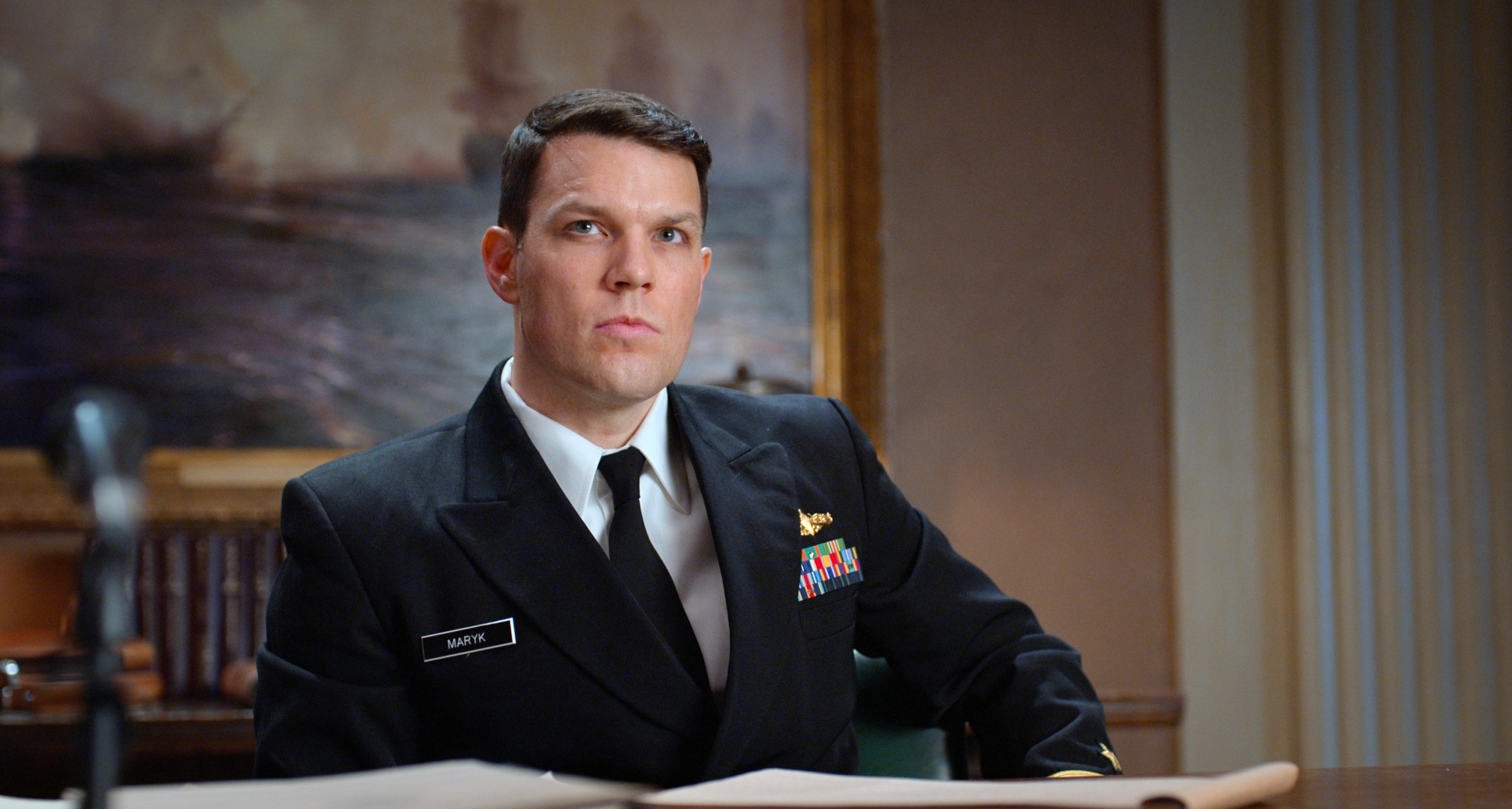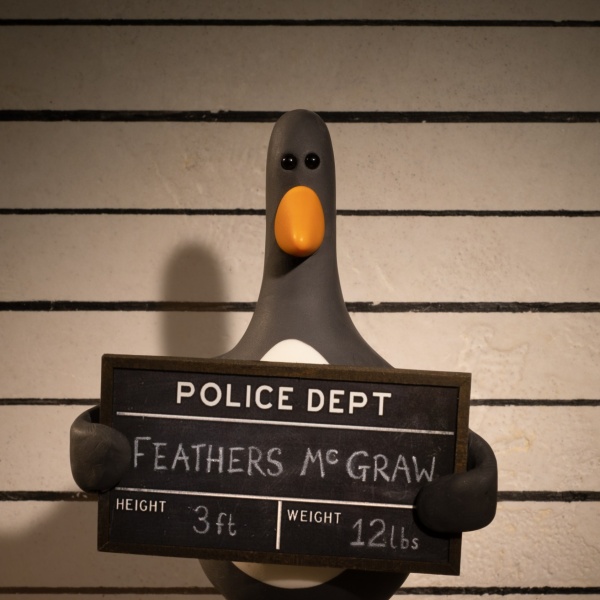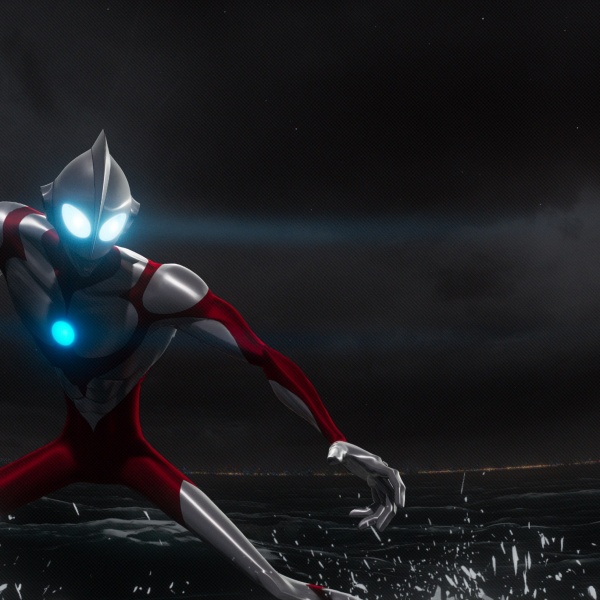News that William Friedkin‘s final film, “The Caine Mutiny Court-Martial,” would be released on Showtime after premiering at the Venice Film Festival was met with widespread disappointment from cinephiles. After forging an unimpeachable Hollywood legacy that included “The Exorcist,” “The French Connection,” and “Sorcerer,” the consensus was that the late director had more than earned a theatrical release for his curtain call.
It was an understandable sentiment, as we’re all occasionally tempted to fantasize about a world where mid-budget adult dramas are a viable box office draw. But the one-two punch of a prestigious festival bow followed by Sunday night pay cable glory feels like the most authentic distribution model that this film could possibly merit. Because at its core, it’s a made-for-TV movie in every sense of the word.
Yes, “The Caine Mutiny Court-Martial” is the work of an auteur who expanded our perception of the ways that Hollywood spectacle could be used toward artistic ends. But it’s also a throwback to an era when TV networks regularly attempted to cram ambitious, self-contained dramas into their broadcast schedules. Taking place in a single courtroom over the course of one day, Friedkin’s film is more interested in the intricacies of naval law procedure than car chases or nitroglycerine-related antics. But stellar acting from its ensemble cast and the film’s remarkable understanding of human nature make it hard to ever forget that the New Hollywood legend is lurking behind the camera.
The story will be familiar to anyone who has seen Edward Dmytryk’s “The Caine Mutiny.” The 1954 naval classic stars Humphrey Bogart as an unstable commanding officer of a minesweeper who is ousted by his lieutenant during a tense storm. When they return to shore, the ambitious young officer who replaced him is forced to stand trial for the mutinous action in a naval court. Friedkin’s take on the material tells the same story, but opts to build an entire feature around the court-martial segment that comprises the end of the original film. Rather than showing the actual mutiny, the events are all revealed through the testimonies of frequently unreliable narrators.
When we meet Lieutenant Stephen Maryk (Jake Lacy), he seems like a dead man walking. His decision to perform the second act of mutiny in the history of the United States Navy has turned him into a wildly unpopular figure in the buttoned-up world of the military elite. So unpopular that even his court-appointed defender Lieutenant Barney Greenwald (Jason Clarke), tells him that he’s “guilty as hell” before they enter the courtroom.
But Captain Luther Blakely’s (Lance Reddick) court is the epitome of professionalism. Serving as the naval equivalent of a judge, Blakely insists that the legal protections to which accused officers are entitled are never skirted. What begins as a vigorous takedown of Maryk from naval prosecutor Katherine Challee (Monica Raymund) slowly turns into a de facto trial of his removed commander, Phillip Queeg (Kiefer Sutherland). Because Maryk never denies the mutiny, the court’s task is to determine whether his actions were justified. The prosecution relies on the testimony of psychologists who vouch for Queeg’s mental faculties, but the defense cites his abusive and erratic behavior as evidence that he could not lead a ship through a crisis. Despite his misgivings about Maryk’s actions, Greenwald throws the kitchen sink at Queeg in an attempt to excuse his client’s behavior.
Friedkin largely avoids dramatic flair, placing his trust in the natural human drama of the court proceedings. His long takes and naturalistic lighting allow the process to play out before our eyes, showing us both the testimonies and the subtle shifts in the observers’ body language. The depth in each shot allows us to observe the tableau of power dynamics that inevitably forms in a room full of naval officers of various ranks. The filmmaking techniques underscore the fact that “The Caine Mutiny Court-Martial” is a defense of American institutions at their best — both the institution of the Navy and the legal system that is supposed to offer every accused man a fair trial. Even as Greenwald’s aggressive defense tactics push the boundaries of decency, Blakely’s decorum allows the process to play out fairly.
Friedkin’s film is technically an adaptation of Herman Wouk’s stage play of the same name — which Wouk adapted from his own Pulitzer Prize-winning novel that inspired the original film, and was previously made into a TV movie by Robert Altman. Friedkin moved the action to 2022 — but aside from changing the names of a few boats and battlefields, the action is largely the same. That it still feels so relevant is a testament to the source material, which offers a timeless exploration of the contradictory human needs to question authority and be shaped by it. Friedkin doesn’t add much to what was already there, but he clearly understood why the story remains so compelling in an era where trust in institutions continues to plummet.
Like so many of the early and late career highlights that bookend Friedkin’s filmography, the minimalistic film is evidence of his ability to turn single-setting theatrical works into gripping cinema. He initially made a name for himself by directing adaptations of stage plays like “The Boys in the Band,” demonstrating a grasp on character that made his future blockbusters feel so much more human than their competition. The fact that “The Caine Mutiny Court-Martial” is opening after months of tributes to Friedkin’s epic set pieces — and on the same weekend as a new “Exorcist” sequel — almost feels like the late director making a winking addendum to his own legacy. Friedkin may have enjoyed an unparalleled command of spectacle, but films like “The Caine Mutiny Court-Martial” prove that he never needed it as a crutch.
Grade: B+
“The Caine Mutiny Court-Martial” is now streaming on Paramount+ with Showtime. It airs on Showtime on Sunday, October 8 at 9 p.m. ET.





